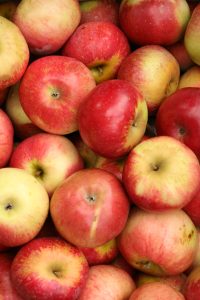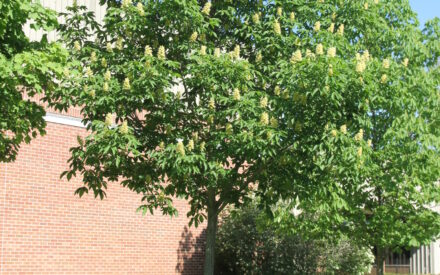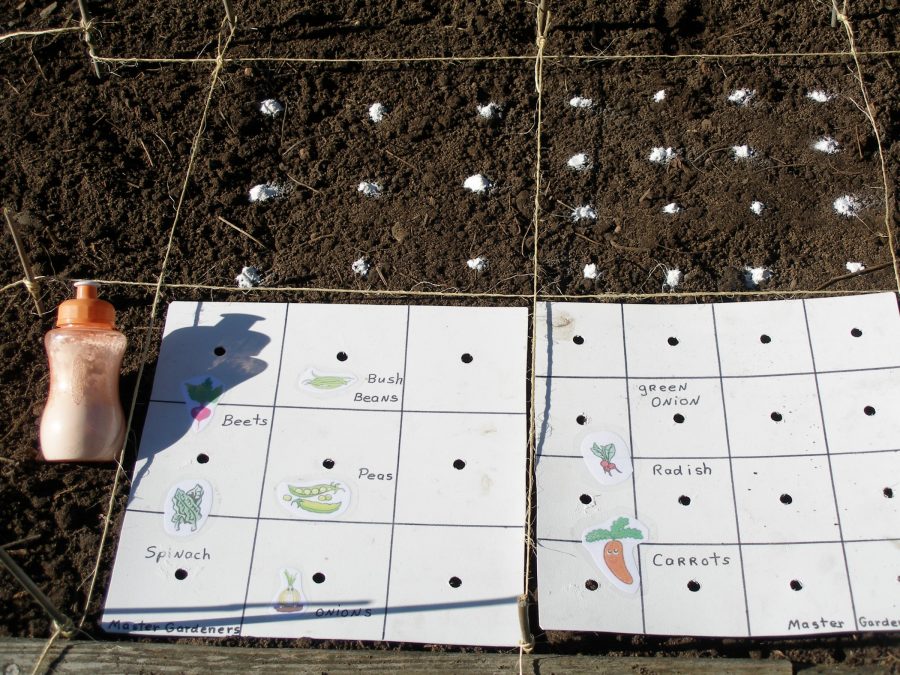
Continuing Education Hours: Claim 2.5 hours if you watch the videos, do the reading and complete the practice exercise.
Have you ever seen an apple tree with many small bags sprinkled throughout the canopy? Did you wonder what that was all about? This module has your answer! Learn all about the apple bagging technique for producing high quality apples while reducing or eliminating the need to apply pesticides.
In this module, you’ll learn:
- How to bag apples
- Why to bag apples
- Identification and management of the insects you’re keeping out by bagging apples.
READ and WATCH: Apple Bagging
Read this Extension publication to learn about the procedure for bagging apples.
- Bagging Apples for Insect and Disease Control, UW-Madison Division of Extension
Watch this short video to see the process in action. Also note, this example shows bagging the apples when they are too big. In Wisconsin, common early season apple pests have likely already caused damage. A reminder to bag when the apples are 1/2-3/4″ large (size of a dime):
Watch this short video starting at 1:42 (advance the video to that point) to see what apple bagging looks like with plastic bags. Also note, this example shows bagging the apples when they are too big. In Wisconsin, common early season apple pests have likely already caused damage. A reminder to bag when the apples are 1/2-3/4″ large (size of a dime):
COMPARE: Bagging vs. Spraying
Bagging apples can reduce the amount of time, energy, and money invested in producing an apple crop. It also can reduce the amount of pesticide we put into our environment. To put this into perspective, please take a look at an example of a recommended spray schedule for homegrown apples. Please note, these recommendations are from Purdue Extension and may contain pesticides specific to the state of Indiana. If applying pesticides in Wisconsin, they must be registered for use in Wisconsin.
If you looked at that schedule and said, “Wow! That’s a lot of spraying and an intense schedule!”, you’re correct! Apples can require a lot of management:
- Expense: Cost of various pesticides, personal protective equipment required for pesticide application, and equipment required for pesticide application.
- Time: Amount required to spray at recommended intervals. This can be extensive. For example, if you look at the Purdue Extension Apple Spray Guide, you will notice toward the bottom of the Time to Spray column an entry saying, “Additional cover sprays (apply at two week intervals until harvest restriction date).” Spraying every two weeks at this stage during the season is recommended if managing apple pests chemically.
Compare that with the amount of labor and expense explained in Bagging Apples for Insect and Disease Control:
- Expense: Bagging supplies (bags, twist ties, etc.). Optional: pesticide, personal protective equipment required for pesticide application, and equipment required for pesticide application while apples are still too small to bag.
- Time: Amount required to thin, individually bag all apples and remove bags 1-2 weeks before harvest. Optional: time to spray while apples are too small to bag.
It can be helpful to take into account expense, time, and inconvenience when deciding how to best manage an apple crop. These can all vary depending on the number of trees, your tolerance for pest damage, and the specific pest pressures the trees face.
WATCH and READ: Pests the Bags Keep Out
Watch this webinar to learn more about common apple pests in Wisconsin.
- Presenter: Diana Alfuth, Extension Pierce County, Horticulture Educator
- Video is ~30 minutes long.
Read this article about another apple pest that bagging can help prevent. This article contains information both for growers and smaller scale gardeners. (Note, this pest has many hosts, not just apples!)
- Brown Marmorated Stink Bug: An Invasive Insect Pest, UW-Madison Division of Extension
PRACTICE
Now it’s time to practice!
Instructions: Write a response to the following scenario below. You will submit your response in a Google Form. Once you hit “Submit”, you will not be able to go back and edit your response. If you wish to save your response, please write it in a separate location where you can save it and then copy/paste your text into the Google Form. This is not graded. Once you’ve submitted your response, you have completed the module and earned 2.5 continuing education hours. To check your work, click the link see an example of good answer.
Scenario: Your friend is excited to grow apples. They have moved into a home with a couple of ~5 year old apple trees. Your friend turns to you for advice on growing apples with little to no pesticides.
You recommend apple bagging. Answer these three questions to help advise your friend:
- Describe this recommended method for growing apples with little to no pesticides. (Be specific! Include any important steps in your description.)
- Why do you recommend this? What are the benefits?
- How does it work to avoid pest damage?
Want to check your answer? Check out our Bagging Apples Scenario Sample Answer.
Report your continuing education hours in the Online Reporting System.

 Gardening & Climate Change: Picking a Tree for the Future
Gardening & Climate Change: Picking a Tree for the Future Asparagus Pests
Asparagus Pests Square Foot Gardening
Square Foot Gardening Container Design
Container Design


